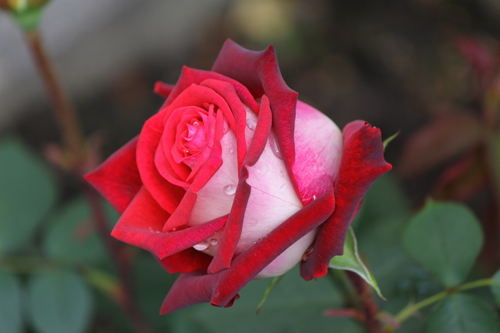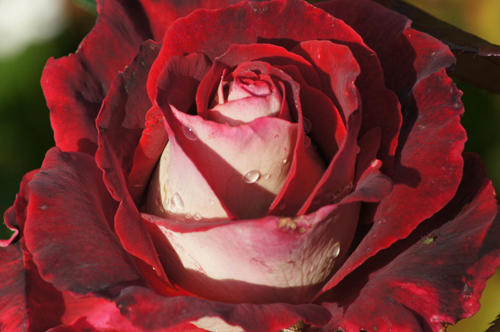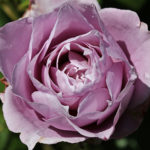Rose of Osiria
The results of the work of breeders sometimes simply boggle our imagination. Experts often create real masterpieces. There are especially many picturesque specimens among the varieties of roses. For example, Osiria is very original, having a luxurious appearance due to the large size of the buds and their chic colors.

History of creation
This form of the noble plant was developed in Germany in 1978. If you want specifics, then the culture was brought out by the breeders of the famous German floriculture company Kordes. Osiria is a tea hybrid that stands out from the rest for its incredibly attractive two-tone color. The variety got its name from the name of the legendary country of Osiria, which, according to legend, sank in the waters of the Atlantic in ancient times.
Description of appearance and features
The culture is an erect shrub with a height of 80 to 110 cm. It consists of strong shoots, some of which may have slight curvatures. An ornamental shrub, slightly spreading, but nevertheless powerful, with a crown reaching 0.8 meters in diameter with proper care. On the stems of the rose there are many large dark green leaves with a matte surface.
The flowers that appear at one time in Osiria are really quite unusual. Solitary, up to 12 cm in diameter, cupped, they consist of numerous double-colored double petals. The outer surface of each petal is milky, silvery white or slightly creamy, the inner surface is a deep dark red. The petals appear velvety. Buds are classic goblet, formed on the shoots one by one. The flowers of a luxurious beauty are not only attractive in appearance. You can also enjoy their wonderful aroma: light, pleasant, with great intensity in the absence of wind and in the evening hours. Rose bloom begins with the arrival of summer and continues until the onset of autumn cold weather. It can be safely called plentiful and lush. Subject to the recommendations for growing and caring for the crop, Osiria will delight you with its bright and delicate flowers for several decades.

Another creation of the Cordes company is distinguished by high winter hardiness, an average level of resistance to black spot and powdery mildew. Rains practically do not affect the appearance and condition of the flowers of this variety. Osiria is extremely rarely affected by pests. The only drawback is that, despite the strength and apparent rigidity of the shoots, the stems can droop during the active flowering of the bush due to the severity of the large flowers appearing on them.
The nuances of cultivation and care
A bicolor beauty needs plenty of sunshine. However, like most varietal roses, it should not be exposed to direct sunlight in the midst of a hot summer day, otherwise the flowers will lose their gorgeous look. Cold drafts also negatively affect the condition of the plant, therefore it is very important to place the crop in a site protected from gusty winds.
The bush is planted in open ground in the first half of May. For a plant, choose a soil with a slightly acidic reaction. Previously, a few hours before planting, the root system of the rose is immersed in water. When planting between hybrids, a distance of about 50 cm is observed.About the same depth, a hole is also dug for the shrub, at the bottom of which good drainage is arranged. Upon completion of planting, the bush must be covered with earth and watered.
Osiria is a rather capricious plant. She needs regular watering, but it is also very undesirable to flood the culture, however, as well as allowing the soil to dry out.The first leads to decay of the roots, the second - to a decrease in the size and number of flowers. The variety also needs periodic feeding. They are best done twice a month throughout the growing season. In the spring, fertilizers rich in nitrogen, manganese, boron, iron and magnesium are applied to the soil. At the stage of budding and at the beginning of flowering, the rose shows phosphorus-potassium concentrates. In autumn, the soil under the bush is enriched with organic matter - peat, humus, compost.

In spring and autumn, a planned pruning is carried out, during which dry, diseased, damaged shoots are removed. You can also update the hive using this procedure. At the end of October, the shoots on the plant are cut off, and the crop itself is covered with straw.
Use cases
Osiria is used to decorate gardens, parks, flower beds. Ornamental shrubs are planted in the form of flower alleys. They are placed in flower beds, where they are combined with other roses of various shades and any flowering perennials. The combination of a hybrid with conifers is beautiful. The variety is also used for cutting, as its flowers look spectacular in any bouquet and retain their fresh appearance for a long time.








